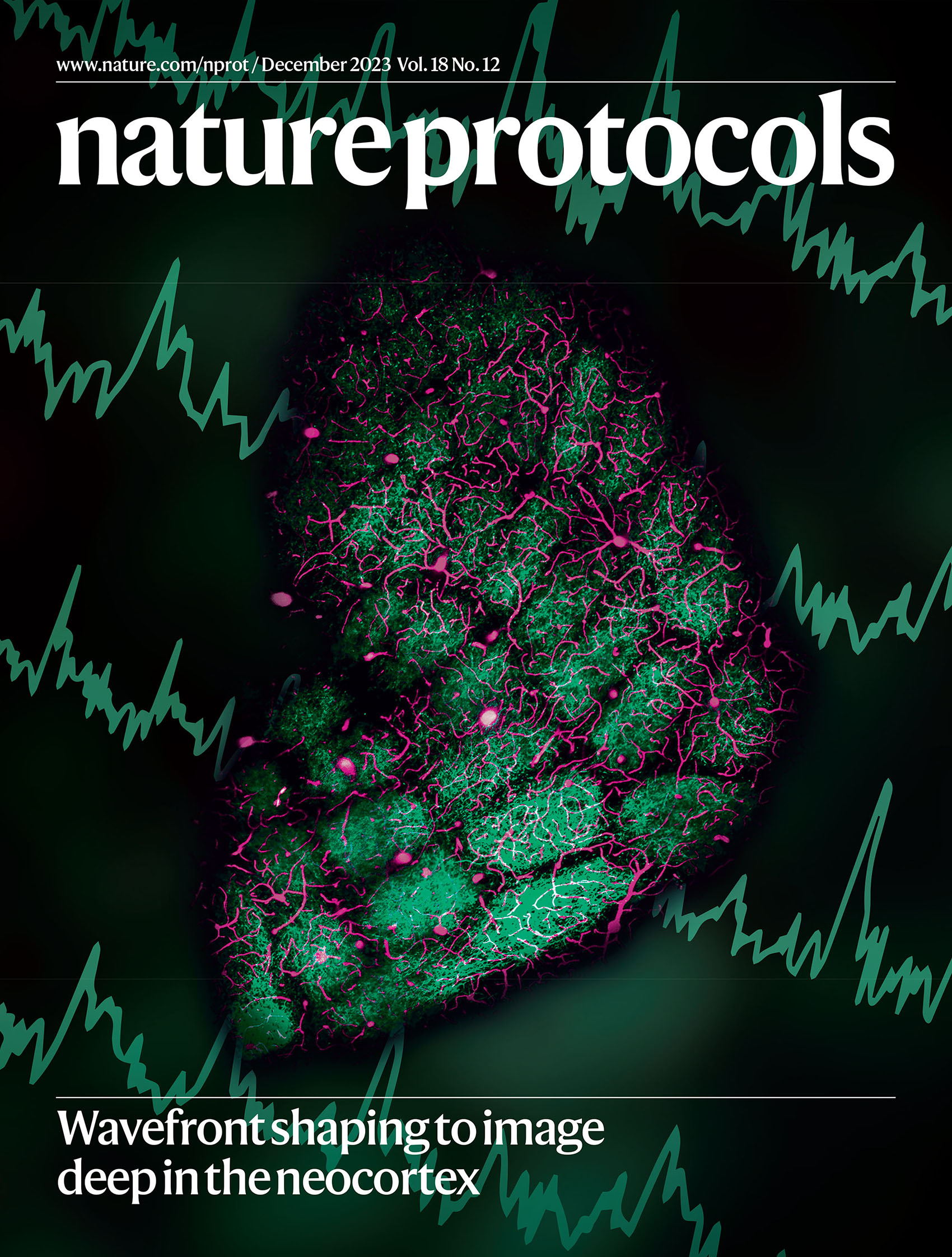Research Techniques
(You gotta have a gimmick if you wanna get ahead*)
Awake, behaving rodents are utilized in support of our ongoing research. We strive to broaden our technical expertise, including the de novo synthesis of new tools, as needed. Our current repertoire includes: automated behavioral monitoring; closed-loop behavioral control; reinforcement learning; intracellular recording; in vivo multi-site extracellular recording; in vivo juxtacellular recording and staining; intracortical electrical, pharmacological, and optical (optogenetic) microstimulation; intrinsic optical signal imaging; in vivo two-photon laser scanning microscopy, including adaptive optics for deep imaging (illustrated below); transcranial imaging (PoRTS window); second and third harmonic imaging; in vivo plasmas mediated ablation of tissue; viral transport and expression; classical and viral tract tracing, including transsynaptic tracing; high-throughput histology and immunochemistry; automated spike sorting; computational anatomy; analytical and numerical methods for data analysis; machine learning; and single cell and network modeling.
We maintain a model shop that supports the fabrication of electronic, optical, fluidic, and mechanical devices. We further maintain in house computational and computer graphics facilities.
Technical expertise that is no longer in current practice in the labortory involves cortical and brainstem slice physiology; G-protein receptor-based reporters of neuronal signaling (CNiFERs); primary cell culture, chemically patterned substrates, construction of in vitro neuronal circuits; and laser light scattering.
